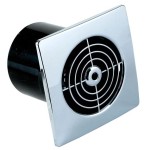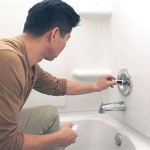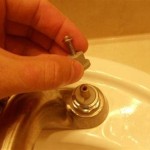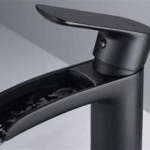How to Clean Out a Bathroom Sink P Trap With Vinegar
The bathroom sink P trap, the curved pipe located beneath the sink, is a common site for clogs. Hair, soap scum, toothpaste, and other debris accumulate within this U-shaped bend, eventually restricting water flow and leading to slow drainage or complete blockage. While chemical drain cleaners are readily available, they can be harsh on the plumbing and potentially harmful to the environment. A more environmentally friendly and often equally effective solution involves using vinegar to clean the P trap. This article provides a comprehensive guide on how to clean out a bathroom sink P trap using vinegar.
Before commencing, it is important to understand the function of the P trap. Its primary purpose is not just to catch debris, but also to prevent sewer gases from entering the bathroom. The water that remains in the curved portion of the pipe acts as a seal, effectively blocking the passage of unpleasant and potentially dangerous gases. Knowing this underscores the importance of maintaining a clear and functioning P trap.
Safety Precautions and Preparation
Prior to disassembling the P trap, certain safety precautions must be observed. Although vinegar is a relatively mild acid, it is still essential to protect the eyes and skin. It is recommended to wear safety glasses and gloves to prevent any potential irritation. Additionally, ensure adequate ventilation in the bathroom by opening a window or turning on the exhaust fan.
Gather the necessary tools and materials. These typically include: a bucket (to catch water and debris), adjustable pliers or a pipe wrench (for loosening the connections), a screwdriver (if the drain stopper mechanism needs to be removed), rubber gloves, safety glasses, a small brush or old toothbrush (for scrubbing), white vinegar, baking soda (optional, for added cleaning power), and rags or towels (for cleaning up spills). Having all these items readily available will streamline the cleaning process.
Next, prepare the work area. Clear the under-sink cabinet of any items that might obstruct access to the P trap. Place the bucket directly underneath the P trap to catch any water that will inevitably spill out when the connections are loosened. It is advisable to spread old towels or rags around the work area to further protect the surrounding surfaces from water damage.
If the sink has a drain stopper mechanism, it might be necessary to disconnect it before removing the P trap. Typically, this involves loosening a nut or screw that connects the stopper linkage to the drain pipe. Carefully observe how the mechanism is connected before disassembling it, as proper reassembly is crucial for the stopper to function correctly. Taking pictures with a smartphone can be a helpful way to remember the configuration. Once the stopper mechanism is disconnected, the stopper itself can usually be lifted out of the drain opening.
Disassembling and Cleaning the P Trap
With the safety precautions in place and the area prepared, the next step involves disassembling the P trap. Carefully loosen the slip nuts that connect the P trap to the drain pipe coming from the sink and the pipe leading to the wall drain. These nuts are designed to be hand-tightened, but over time, they can become stuck or corroded. If the nuts are difficult to loosen by hand, use adjustable pliers or a pipe wrench to gently grip the nuts and turn them counterclockwise. Be careful not to overtighten or damage the nuts, as this could lead to leaks after reassembly.
As the nuts are loosened, be prepared for water and debris to spill out into the bucket. Once the nuts are sufficiently loosened, carefully detach the P trap from the drain pipes. Hold the P trap upright to prevent spillage as it is being removed. Examine the inside of the P trap for accumulated debris. Often, a large clump of hair, soap scum, and other materials will be lodged within the bend.
Remove any large debris from the P trap by hand or with a small tool, such as a screwdriver or wire hanger. Dispose of the debris properly. Rinse the P trap thoroughly with water to remove any remaining loose particles. If the P trap is particularly dirty or has a buildup of stubborn residue, it can be soaked in a solution of white vinegar. Fill a container with enough white vinegar to completely submerge the P trap and allow it to soak for at least 30 minutes, or even overnight for heavily soiled traps. The vinegar will help to dissolve soap scum and other organic matter.
After soaking, use a small brush or old toothbrush to scrub the inside of the P trap, paying particular attention to the areas where debris tends to accumulate. Rinse the P trap again with water to remove any remaining vinegar and loosened debris. If desired, baking soda can be used in conjunction with vinegar for added cleaning power. Pour about a cup of baking soda into the P trap, followed by about a cup of white vinegar. This will create a fizzing reaction that can help to dislodge stubborn clogs. Allow the mixture to sit for about 30 minutes, then rinse thoroughly with water.
Inspect the drain pipes that connect to the P trap. Use a brush or cloth to clean the inside of these pipes as well, removing any accumulated debris or buildup. This will help to ensure a smooth flow of water and prevent future clogs. Pay attention to the threads on the pipes and the slip nuts, ensuring they are clean and free of any debris that could prevent a tight seal during reassembly.
Reassembling the P Trap and Testing for Leaks
Once the P trap and drain pipes have been thoroughly cleaned, the next step is to reassemble the P trap. Carefully align the P trap with the drain pipes and tighten the slip nuts by hand. Ensure that the P trap is properly seated and that the nuts are snug, but not overtightened. Overtightening can damage the nuts or the pipes, leading to leaks.
If the drain stopper mechanism was disconnected earlier, reattach it at this point. Carefully reconnect the linkage to the drain pipe, ensuring that all the parts are properly aligned. Refer to the pictures taken during disassembly, if necessary, to ensure correct reassembly. Test the stopper mechanism to ensure that it is functioning properly. The stopper should move smoothly up and down, and it should create a tight seal when closed.
After reassembling the P trap, it is crucial to test for leaks. Run water into the sink for several minutes, allowing the P trap to fill with water. Carefully inspect all the connections for any signs of leaks. If leaks are detected, tighten the slip nuts slightly. If the leaks persist, it may be necessary to disassemble the P trap again and inspect the nuts and pipes for damage. Worn or damaged slip nuts may need to be replaced. Teflon tape can also be applied to the threads of the pipes to create a tighter seal.
Continue to monitor the P trap for leaks for several hours after reassembly. Place a dry towel under the P trap to help detect any slow leaks that may not be immediately apparent. If any leaks are detected, address them promptly to prevent water damage. In some cases, it may be necessary to call a plumber to repair or replace damaged pipes or fittings.
Once it has been confirmed that there are no leaks and the drain is flowing freely, the cleaning process is complete. Replace any items that were removed from the under-sink cabinet. Regular cleaning of the P trap, approximately every few months, can help to prevent the buildup of clogs and maintain optimal drainage. Using a strainer in the sink drain can also help to catch hair and other debris before they enter the P trap.

Unclog Drains Naturally With Baking Soda And Vinegar Mom 4 Real

Why You Should Never Use Baking Soda And Vinegar To Clean Clogged Drains Bren Did

Unclog Drains Naturally With Baking Soda And Vinegar Mom 4 Real

3 Ways To Unclog A Drain With Salt And Vinegar Wikihow
Tiktok To Unclog Drains With Baking Soda And Vinegar Works

Can You Really Clean The Drain With Baking Soda And Vinegar

How To Unclog A Drain With Baking Soda And Vinegar

3 Ways To Clean A Sink Drain Wikihow

How To Unclog A Sink 5 Natural Easy Ways Kitchen Cabinet Kings

Unclog Drains Naturally With Baking Soda And Vinegar Mom 4 Real
Related Posts







